
The following is a list of books which I have read and recommend in order to promote an interest in STEM (science, technology, engineering and math-or-medicine). Why?
- I am very worried about the future of humanity. Academic grades in the west have been slipping for some time but now religious extremism is on the rise along with an increasing distrust of science (and scientists) which are symptoms of humanity's next dark age (there have been more dark ages before this so we should all beware the warning signs)
- To make matters worse, many IQ charts (one , two , three) show average IQ levels in China, Hong Kong and Singapore (score: 109) are a full eleven points ahead of the USA (score: 98). How could it be possible that the USA is two points lower than the world's mean value of 100?
- Notice that countries with high levels of religious belief tend to have lower IQ scores.
- Average rankings in China and Japan exceed every location in Europe and the Western Hemisphere. Recall that religion is not illegal in China but is discouraged as a form of "magical thinking".
- The average rank of Israel (score: 95) is lower than the USA (score: 98). In Israel, an educated working-class
supports the religious-class
who do not work but are politically active.
quote: They dismiss the calls for equality in bearing the burden of military service by claiming that full-time study of the Torah provides “spiritual protection” for Israel. (a.k.a. magical thinking) - It appears that politics has become another form of dogmatic thinking in western democracies (i.e. putting your faith in a party or on a leader)
- Perhaps the rise in Christian Evangelicalism and Pentecostalism might explain the falling scores in the USA
- I was raised in a Lutheran Evangelical household so know all about magical thinking. BTW, while I thought we Evangelicals were crazy, Evangelicals still found the time to make fun of Pentecostals (pot kettle black?)
- Religion is on the rise in North America where the "Christian right" masquerades as the "religious right". The religious zeitgeist has many parents buzzing about "home schooling" and replacing "secular public schools" with "sectarian private schools". This is great news if you want to produce a society of priests and nuns, but will sectarian educated children be able to pass college entrance exams? On top of this, many Americans are ignorant of the fact that their Founding Fathers created the USA based on secular roots (all but one of the original sixteen were Deists). Americans: read this article.
- But this quote by Carl Sagan says it better:
There's another reason I think popularizing science is important, why I try to do it. It's a foreboding I have -- maybe ill-placed -- of an America in my children's generation, or my grandchildren's generation, when all the manufacturing industries have slipped away to other countries; when we're a service and information-processing economy; when awesome technological powers are in the hands of a very few, and no one representing the public interest even grasps the issues; when the people (by "the people" I mean the broad population in a democracy) have lost the ability to set their own agendas, or even to knowledgeably question those who do set the agendas; when there is no practice in questioning those in authority; when, clutching our crystals and religiously consulting our horoscopes, our critical faculties in steep decline, unable to distinguish between what's true and what feels good, we slide, almost without noticing, into superstition and darkness.
- After some urging by Google in 2018, I broke up the original single-page monster into many smaller pages which would be more friendly to smaller devices (tablets, pads, phones).
| Category | Pages | |
|---|---|---|
| Science 1 | Five priceless gems
|
detailed below |
| Science 2 | mostly physics, chemistry, astronomy (some math) | another page |
| Science 3 | mostly biology, genetics, nature and climate change | another page |
| Technology | mostly technology; some math; some tech culture (cryptography, computers, DSP, electronics, space travel, etc.) |
another page |
| Sci-Fi | Science Fiction and Speculative Fiction Asimov and Clarke (two hard sci-fi writers) |
another page another page |
| The Human Condition |
The Human Condition (history, biographies, economics, politics) Other Literary Diversions
|
another page |
Five "priceless gems" published by Citrus Press (Titusville, Florida)
Three science books by John Granville
Discovery of Motion (2007) John Granville
subtitled: An Introduction to Natural Philosophy (533 pages)
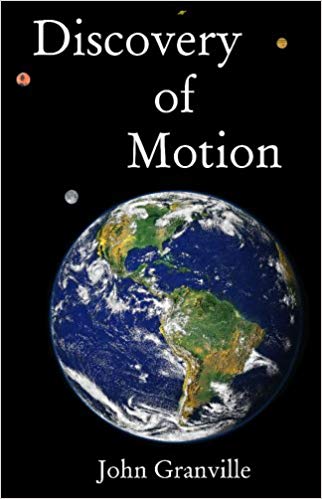 science lover's "must
have"
science lover's "must
have" https://www.amazon.com/Discovery-Motion-Introduction-Natural-Philosophy/dp/1934242985/
https://www.bookfinder.com/search/?author=Granville&title=discovery+of+motion&lang=en
A perfect gift for any teenager with an interest in science (but science nerds will want a copy for themselves)
- This book is sub-titled An Introduction to Natural Philosophy for good reason. The author begins by taking the reader from a speculative "natural
philosophy" of a caveman to the actual "natural philosophy" of the early Greeks. He continues through the European Dark Age, bringing the reader to the present day
where we use the word science rather than natural philosophy. If you have never been previously exposed to complete explanations for
concepts like Zeno's Paradox, then you will be in for a treat.
- I had read Zeno's Paradox more than a half-dozen times in other books, but those presentations now appear incomplete because I never got the point. In later chapters Granville employs Zeno to support the idea of limits (the on-ramp to calculus; don't worry, the math stays simple)
- Your inner nerd will soar while you read about Granville's modern experiment which repeats Galileo's work at Pisa (Granville only uses material which would have been available to Galileo with one notable exception: latex party balloons and paperclips)
Comments:
- Richard Feynman once said, "really good books were meant to be read twice". I feel that Discovery of Motion is such a book.
- I have often lamented the passing of great explainers like Isaac Asimov and Carl Sagan while wondering "where are their replacements?" John Granville is one such candidate and I find his writing style the correct mix of "meat and potatoes". Like Asimov, Granville includes a lot of supporting material and is not shy about publishing mathematical equations which you can skip if you desire, but I suggest you do not.
Æther Drift (2015) John Granville (84 pages) (a.k.a. Ether Drift)
for serious consideration by all nerdshttps://www.amazon.com/Aether-Drift-John-Granville/dp/1934242969/
comment: If you want to be intellectually stimulated for the tiny sum of $10 then buy this book. The only descriptive phrase which comes to mind is "very high signal-to-noise ratio". The "dialog" between Simplicio and JG are reminiscent of another great author (Galileo)
This book is about a modern attempt to measure an æther drift. The tests were conducted between 2010 and 2013, but the preparatory work goes back to much farther than that. You might not find it extraordinary that someone would repeat a classic old experiment, but you might well find the underlying reasons more than interesting ... and the results even astonishing.
In 1881, from April to August, A.A. Michelson conducted experiments to measure an æther drift relative to earth's motion in its orbit about the sun. To virtually everyone's amazement he found no first order drift. The existence of an aether was thought to be imperative to conduct light waves, and Michelson's results were simply beyond comprehension. There were other experiments, of course, all yielding the same results.
G.F. FitzGerald and H.A. Lorentz developed a theory that objects "shrank" when moving through the aether, but the explanation finally accepted (i.e. Einstein's Relativity theory) postulated the speed of light was the same regardless of the motion of any reference coordinates. Maintaining the principle of relative motion required time and space to become variables, and the classic function of an aether became incompatible ... and the aether was pronounced obsolete.
Be-that-as-it-may, this book reports an experiment that leaves little doubt an aether exists. Most astonishingly the theory is neither beyond comprehension nor even obscure. In fact it's obvious! ... and pretty nearly imperative. For more than a century this aether has been right before our eyes ... hidden in plain view. The thing we've all been missing is revealed in the Preface, and PART II of the book fills in the details.
Chapters: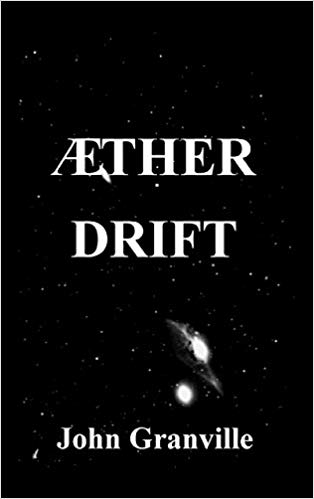
- PART I - THE EXPERIMENT
- The Granville Interferometer 1
- Theoretical Expectations
- Data & Data Reduction
- Test Results
- PART II - THE ÆTHER (or Aether, or Luminiferous Ether)
- Æther (Ether)
- Photons 2
- Scientific Method I
- Scientific Method II
Subscripts:
- In order to repeat the Michelson-Morley experiment they built their own
interferometer employing modern electronics:
- an inexpensive Helium-Neon laser
- a photo diode detector
- a piezoelectric transducer behind one of the mirrors (modulated to minutely cycle the length of one light path)
- a stepper motor to slowly rotate the platform
- comment: my primary college education was as an Electronic Technologist so I found this part of the book "delightful"
- partial quote from page-51: Photons are electromagnetic waves as they occur at visible (i.e. light) wavelengths ...
{ skip a paragraph on antenna-length math from every RF engineer's handbook }
At the frequencies of light (~5x1014 Hz) antennas shrink, of practical necessity, to atomic dimensions
{ more stuff is skipped over }
... the vibrating electron is a microscopic alternating current confined to atomic dimensions (i.e. the atom acts like an antenna) and the electromagnetic waves are generated according to Maxwell's equations.
Comments:
- so the colloquial definition of photon could be redefined to mean "a packet of EM energy whose wavelength is less than the size of an atom"
- therefore, EM transmissions (Radio, TV, Wi-Fi) which employ a wavelength longer than that found in visible light, do not involve photons, per se (but perhaps this is a forest-versus-trees thing)
- therefore, as soon as we use the word photon we are restricting the conversation to quantum mechanics (so the photon is only a quantum particle)
- Einstein's 1905 paper on the photoelectric effect mentions photons only because Einstein is dealing with quantum mechanical effects (discrete packets of energy waves; would it be wrong to think wavicles?)
- Food-for-thought:
- consider a ray of light moving through plain glass; forget about photons as waves for a moment and only think about them as particles; are they traveling between the atoms (captured then re-emitted) or is something else occurring?
- now consider a kilometer of inexpensive multi-mode optical fiber. Here the word "mode" to means "path" and these can be of different length (one path is straight down the middle while the longest path bounces off the reflective inside surface when the fiber is bent, curved or coiled). The signal is transmitted as a single digital pulse (square wave) but is received as a smeared out sign wave)
- now consider a kilometer of more expensive single-mode optical fiber where light never reaches the inside surface but is gently guided back to the middle due to a change in the incidence of refraction. One might suppose that the photons are moving between the atoms (captured then re-emitted), but a better theory (put forth in this book) is that atoms behave as antennas and the photons are guided along with almost zero loss
Concerning the Discovery of the Æther (2016) John Granville (64 pages)
for serious consideration by all nerdshttps://www.amazon.com/Concerning-Discovery-AEther-John-Granville/dp/193424290X/
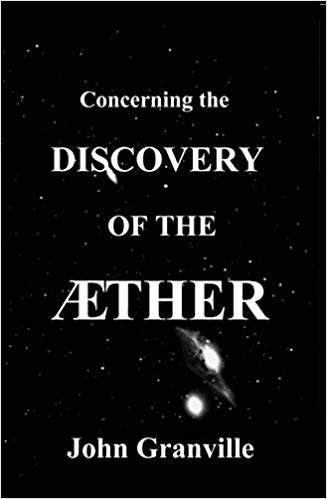 This small book
is dense with well written content supporting the author's hypothesis that the luminiferous aether is real.
The author takes us on a brief excursion through European natural philosophy with stops at Descartes, Huygens, and Maxwell who also believed aether was real. The journey
continues through Michelson and Morley, who's famous failed experiment proved that aether was not real (or at least could not be detected).
This small book
is dense with well written content supporting the author's hypothesis that the luminiferous aether is real.
The author takes us on a brief excursion through European natural philosophy with stops at Descartes, Huygens, and Maxwell who also believed aether was real. The journey
continues through Michelson and Morley, who's famous failed experiment proved that aether was not real (or at least could not be detected).
Chapters:
- The Æther Sea (or "Ether Sea")
- Gradient, Divergence & Curl (or Grad, Div and Curl)
- The Æther Mechanism (or "Ether Mechanism")
- Electrostatics
- Electromagnetism
- Inductance
- Electromagnetic Waves
- Matter & Mass?
Two FFT books by Anders Zonst
Understanding the FFT (1995/2000) Anders E. Zonst
Subtitled "A Tutorial on the Algorithm & Software for Laymen, Students, Technicians & Working Engineers"
highly recommended for engineers (both software and electronic), hackers
and nerds 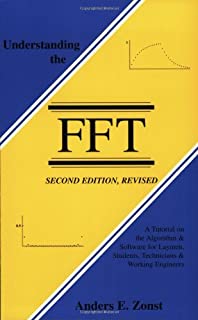
- Subtitled "A Tutorial on the Algorithm & Software for Laymen, Students, Technicians & Working Engineers", weighs in at 180 pages. I wish I would have owned a copy of this book ten years earlier because I would have saved considerable time and money.
- quote from page 2: "for now we may say that this transform, in its discrete form, provides a mathematical tool of such power and scope that it can hardly be exceeded by any other development of applied mathematics in the twentieth century"
- four chapters on DFT (Discreet Fourier Transform)
- six chapters on FFT (Fast Fourier Transform)
- ten appendices
- demo programs written in PC-BASIC (a generic term for: MS-BASIC, GW-BASIC, BASICA, QuickBASIC, QBasic, etc.) are sprinkled throughout
- see next book description for demonstration software
Understanding FFT Applications (1997/2004) Anders E. Zonst
Subtitled "A Tutorial for Laymen, Students, Technicians, & Working Engineers"
highly recommended for engineers (both software and electronic), hackers
and nerds 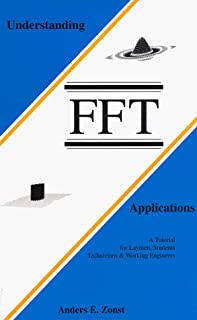
- This first edition of this book (1997) is subtitled "A Tutorial for Laymen, Students, Technicians, & Working Engineers", weighs in at 415 pages.
- This second edition of this book (2004) is subtitled "A Tutorial for Students, Technicians, & Working Engineers", weighs in at 278 pages, and comes with a CD-ROM
- Demonstration software: Both books contain example programs written in BASIC so that Fourier concepts can
be more easily demonstrated to the student
- Citrus Press (Titusville, Florida) has granted permission to me to redistribute their copyrighted BASIC source code (folder: https://neilrieck.net/misc/zip/fft/ )
- Free BASIC interpreters for your FFT experiments has moved here
- since BASIC is so "last century" (click here to see why) so you may have some trouble getting a BASIC for your modern computer so click here to see a few FFT examples converted to Python (p.s. in production use, a python programmer would import either numpy or scipy, then would have access to professionally written FFT routines)
 Back to Home
Back to HomeNeil Rieck
Waterloo, Ontario, Canada.